Garden sheds can push the envelope of sustainable design and they can show how much can be achieved when architecture and garden design come together with interesting, practical, and beautiful solutions.
 When we integrate green roofs into our designs, we can add to our covered amenity space without reducing our plantable areas. There are a number of different green roof solutions that are suited to different types of roofs, different positions, and different areas or climate zones. It is important to understand the site and to choose accordingly.
When we integrate green roofs into our designs, we can add to our covered amenity space without reducing our plantable areas. There are a number of different green roof solutions that are suited to different types of roofs, different positions, and different areas or climate zones. It is important to understand the site and to choose accordingly.
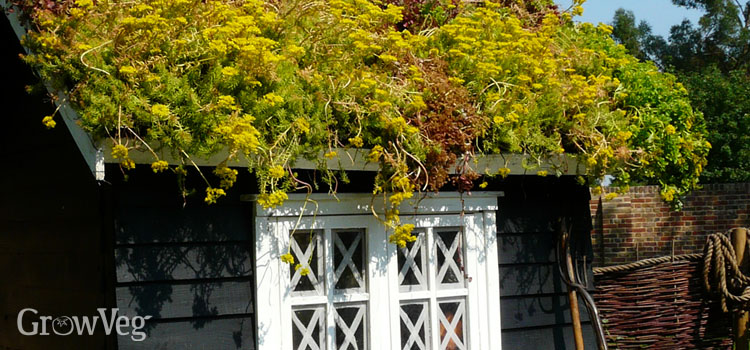 Selecting native species rather than a generic “green roof” mix is generally a good idea since local plants are likely to be ideally suited to the local growing conditions.
Selecting native species rather than a generic “green roof” mix is generally a good idea since local plants are likely to be ideally suited to the local growing conditions.
Man-made structures don’t have to stand out like a sore thumb from the environment they sit in. Sometimes, it might be possible to go a step further and design buildings that form part of the garden landscaping and which are at least partially earth-sheltered. Partly subterranean, earth-sheltered structures can be an interesting option, especially on sloping sites. The garden can continue over the structure, since there can be a turf roof on top that, in some instances, can be walked upon and used just like other parts of the garden.
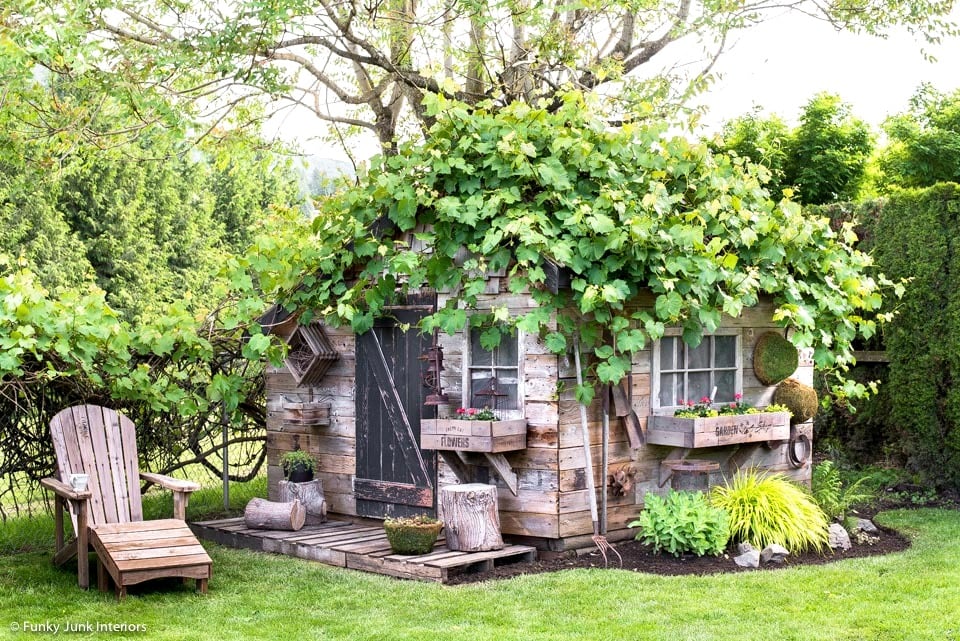 A natural and organic feel is naturally easier to achieve when you choose to build a sustainable garden building with natural materials. Building the walls of a garden shed from cob, adobe, or straw bales, to name a few eco-friendly and sustainable examples, can give you a building that is unique and truly functional and fit for purpose.
A natural and organic feel is naturally easier to achieve when you choose to build a sustainable garden building with natural materials. Building the walls of a garden shed from cob, adobe, or straw bales, to name a few eco-friendly and sustainable examples, can give you a building that is unique and truly functional and fit for purpose.
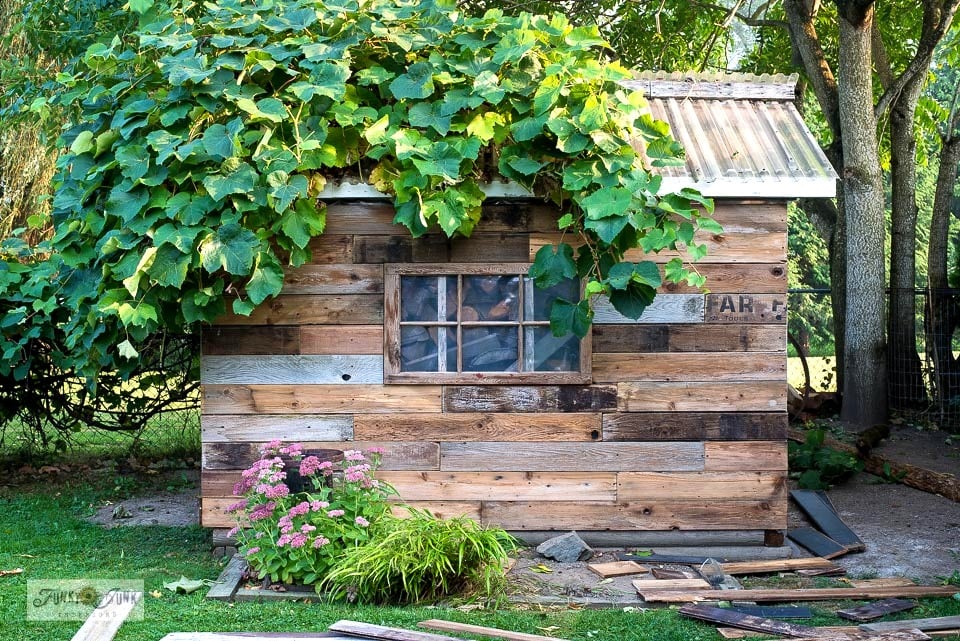 Of course, garden sheds cannot only be made from natural materials. They can also be constructed from reclaimed timber and a range of other reclaimed materials.
Of course, garden sheds cannot only be made from natural materials. They can also be constructed from reclaimed timber and a range of other reclaimed materials.
Round or curving shapes can help your garden shed stand out from the crowd and blend much more appealingly into the natural and semi-natural surroundings of your garden. And materials like cob, adobe, or straw bales with a natural render can give you that flexibility when it comes to shape and design.
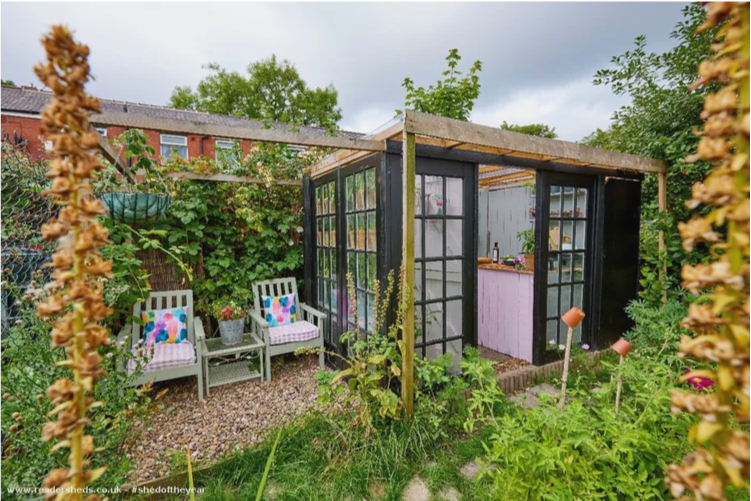 Whatever materials you choose to construct a garden shed or other garden building, you should make sure that you think about that structure holistically in the context of the garden as a whole. Not only should you think very carefully about where a new garden structure is placed, and the impact that will have on the space and plants around it. You should also think about what the building can offer for you and your garden through integrated design.
Whatever materials you choose to construct a garden shed or other garden building, you should make sure that you think about that structure holistically in the context of the garden as a whole. Not only should you think very carefully about where a new garden structure is placed, and the impact that will have on the space and plants around it. You should also think about what the building can offer for you and your garden through integrated design.
For example, you might collect rainwater from the structure, incorporate living walls or other vertical gardening options on its sides, and/or provide habitat for wildlife as built-in design features.
These are just a few examples of how outdoor structures can work with your garden instead of against it.
You can read the original article at www.treehugger.com

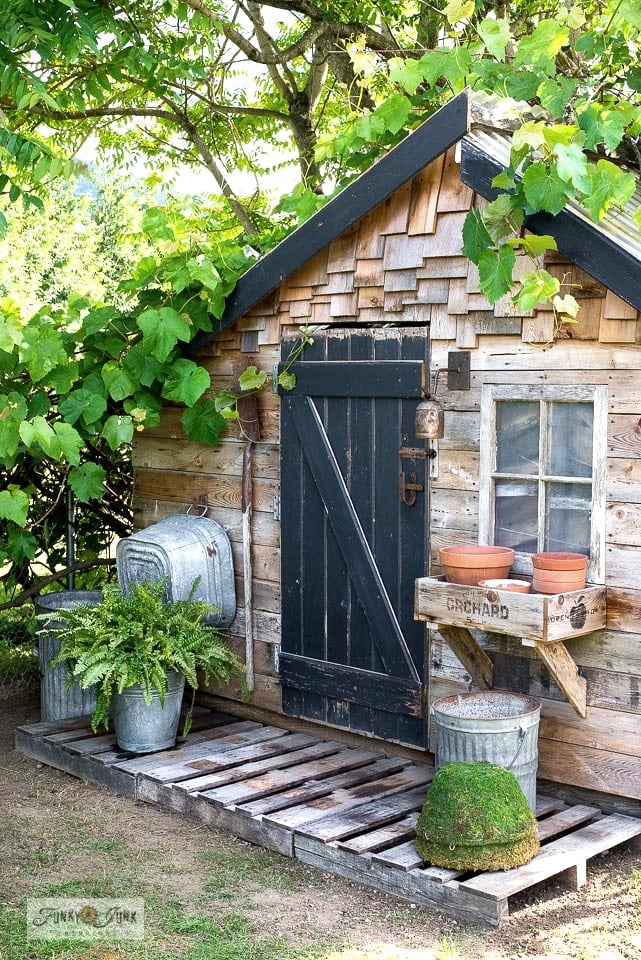
Indeed, outbuildings often lend themselves to architectural experimentation! If you want to test out a new alternative building material, shape, style, etc, it’s advisable to try it on an accessory structure before going full steam ahead incorporating it into your main dwelling.